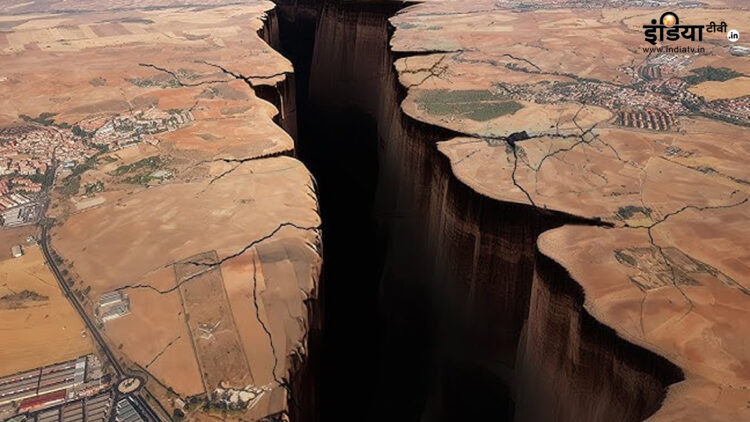Fear of birth of new ocean
The huge rocky plates below the Earth’s surface, called tectonic plates. These plates float on the Mental of the Earth and move slowly. This slow pace causes major geological changes in millions of years. This change is seen in the continent of Africa. Two major tectonic plates in East Africa- Nubian and Somalian, are moving away from each other. This isolation is building the East African Rift System (Ears), which is one of the most active geological regions on Earth. Scientists consider this process to be the beginning of the birth of a new ocean, which can have far -reaching consequences.
Ears starts from Ethiopia to about 3,500 km to Kenya, Tanzania and Mozambic. The region is marked by a series of cracks and faults caused by stretch and thinning of tectonic plates. This process is slow, plates slide only a few millimeters every year, but in millions of years it can create a significant difference.
New ocean will be born
When tectonic plates are different, the ground between them is stretched and thin. This creates cracks, which slowly deepen. Scientists believe that the water of the Red Sea and the Gulf of Aden can be filled in these cracks, which will eventually form a new ocean. This process is similar to the formation of the Atlantic Ocean millions of years ago.
2005 incident in Afar region
In 2005, a range of more than 420 earthquakes in the Afar region of Ethiopia created a 60 km long and 10 meter deep cracks. This phenomenon was an important indication for scientists that the partition of Africa is intensifying than expected. This crack is getting about half an inch wide every year, which shows the process of formation of the new ocean.
Cracks are getting deeper slowly
Which countries will be affected?
This tectonic movement will affect countries like Ethiopia, Kenya, Tanzania and Somalia the most. Landlocked countries such as Uganda, Jambia and Rwanda can find the beach in the future, giving them new opportunities for marine trade and economy. At the same time, some part of Somalia and Ethiopia can become a separate continent, which scientists are calling the ‘Nubian continent’.
Scientists’ warning
Earlier scientists believed that this process would take millions of years, but the recent study and Afar region incident showed that it could be completed in 5 to 10 million years. According to the Geologist Synthia Abbinger of Tulen University, incidents such as earthquakes or volcanic eruptions may intensify this process. The formation of the new ocean will completely change Africa’s ecosystem. Sea climate will have a profound effect on weather, agriculture and bio-diversity.
Gondwana supercontinent similar process
Gondwana Supercontinent was broken about 180 million years ago, separating Africa and South America and formed the Atlantic Ocean. Scientists say that the ongoing process in East Africa is a small version of that.
Scientists are closely monitoring these geological changes using GPS tracking, seismic data and satellite imagery. Magma’s activities and corruption expansion in the Afar region are playing an important role in understanding this process. This research is important for understanding the future of the Earth.
Also read-
Priyanka Gandhi stopped her convoy on the way, sent the injured people in the road accident to the hospital- VIDEO
HAJJ 2025: 3600 pilgrims from Jammu and Kashmir will Hajj, first batch from Srinagar leaves for Mecca
Latest World News





